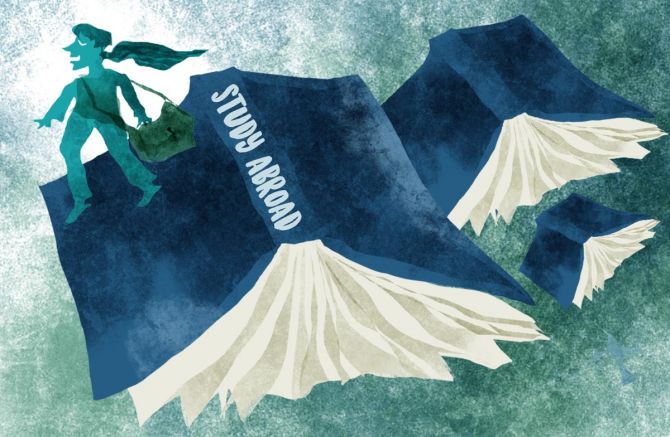The depreciation in rupee may pose a problem for students who have taken loans from Indian lenders.

While the Indian rupee has depreciated by around 5 per cent against the US dollar since the beginning of the year, experts reckon students who take out education loans to study abroad are cushioned from the currency volatility for the time being.
They, however, believe the students might feel the pinch if the rupee continues to depreciate further.
"With the rupee depreciating against the dollar, the costs for students going for education to the US is expected to go up," says Arijit Sanyal, managing director and CEO, HDFC Credila Financial Services.
"While sanctioning loans, there is usually headroom to take into account aspects like currency fluctuations and general rise in total cost of education over the study period and, consequently, the sanctioned limits are generally adequate meet such vagaries," explains Sanyal.
According to Ankit Mehra, co-founder & CEO of Gyandhan, a digital-first company that has disbursed over Rs 1,000 crore (Rs 10 billion) in study abroad loans to more than 3,000 Indian students, while the devaluation is sudden, as a policy students are advised to budget for a 5 per cent depreciation in the currency.
"As long as you are taking this into your calculation, it will not be a problem. Even though the rupee has depreciated a great deal, it does not change the overall cost dynamics dramatically".
An IDBI Bank executive said the loan is given in rupees and is converted into dollars at prevailing rates based on student requirements.
Technically, s/he will get less dollars for when the rupee is weakening.
Going by current assessment, the present trajectory of weakening rupee is within manageable limits, he said.
The rupee has been depreciating sharply ever since tensions broke out between Russia and Ukraine in February.
The Reserve Bank of India has been intervening in the foreign exchange markets aggressively, trying to slow the pace of the fall.

'All these factors are putting pressure on the rupee. This depreciation though is a boon for exporters, it's creating pressure on Indians remitting USD abroad, be it for college/university fees or traveling abroad on leisure,' said Remitx, a cross-border remittance firm.
Mehra explains that the depreciation in rupee may pose a problem for students who have taken loans from Indian lenders.
"If you have taken a $40,000 loan from an international lender, then the loan quantum does not change when the rupee depreciates. But if you have taken a loan from the Indian lender and suddenly the currency depreciates, then the quantum of loan becomes smaller and you may have to garner more funds or apply for a top-up loan," Mehra points out.
When it comes to repayment, there are two scenarios: One, if one is staying back in the US and repaying the loan there and, two, if one comes back to India and repays the loan from here.
In the first scenario, there will be no change even if the currency depreciates.
But if the person has come back to India and had taken a loan from the US lender, then the EMI amount will increase significantly when the currency depreciates.
Now, if the loan is from an Indian bank and one comes back to India, they will repay the loan like any other loan.
But if they stay back in the US, a depreciation in rupee will in fact be favourable for them because suddenly the EMI will reduce.










